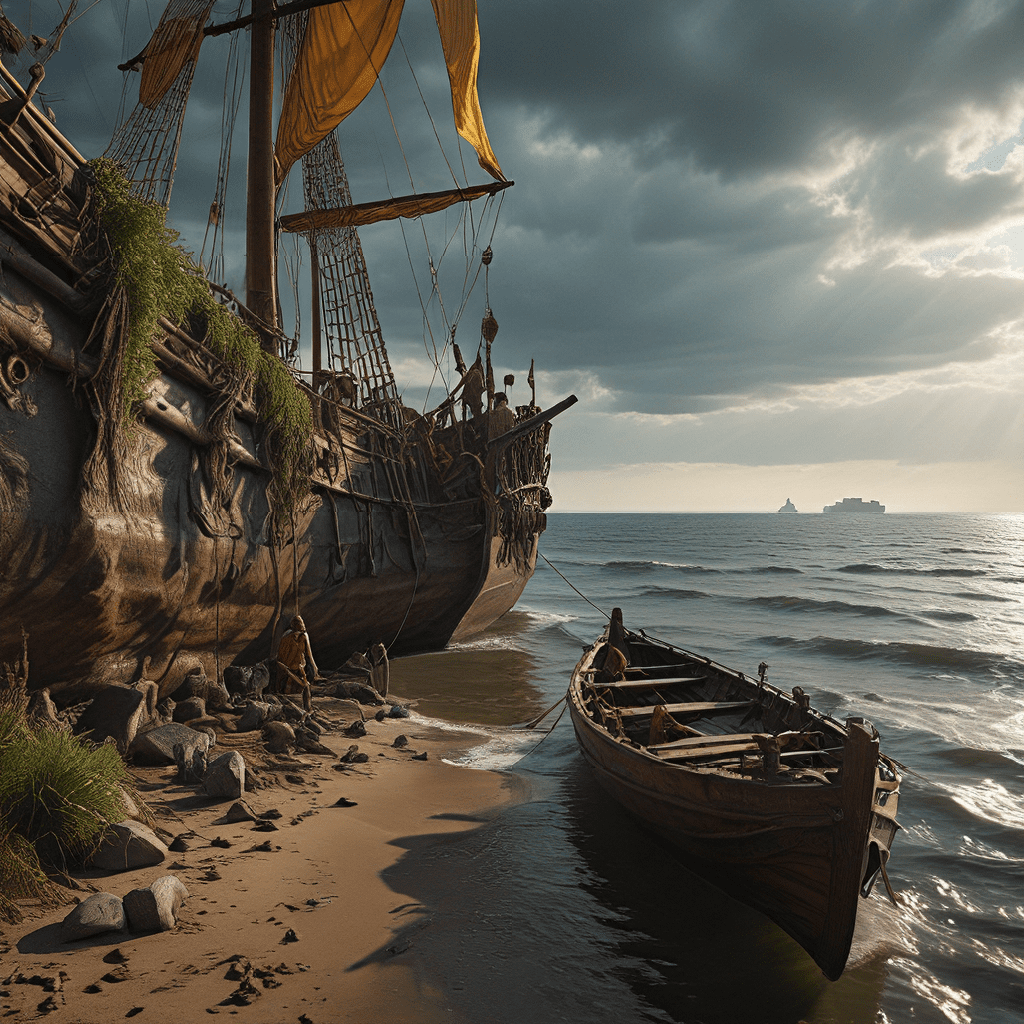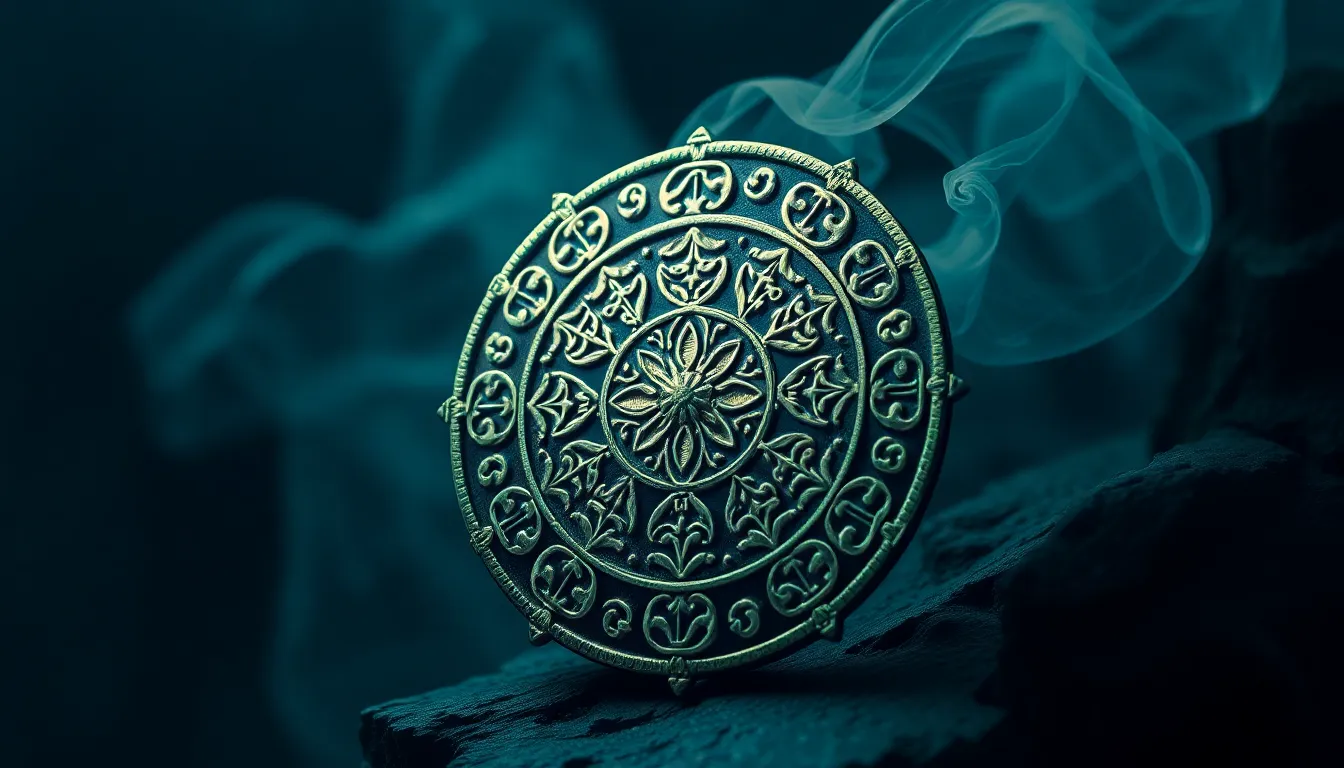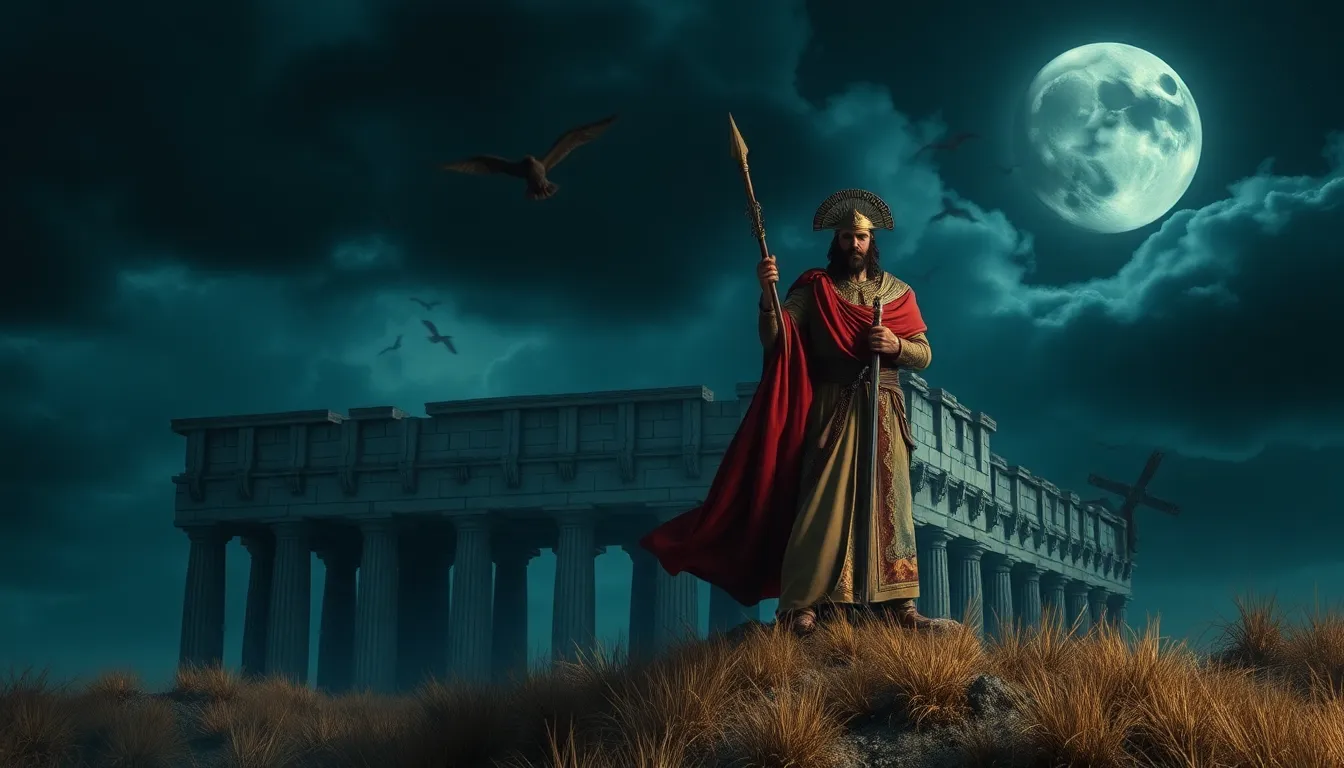Baltic Mythology: A Tapestry Woven with Betrayal and Revenge
The Baltic region, nestled along the northeastern shores of Europe, boasts a rich tapestry of mythology, steeped in tales of gods, goddesses, and epic adventures. These ancient stories, passed down through generations, offer a captivating glimpse into the beliefs and values of the Baltic people. But within this vibrant mythology lies a recurring theme: the potent forces of betrayal and revenge. These themes, woven through various narratives, reveal a fascinating insight into the complex human experience and the enduring struggle between good and evil.
The Gods of the Baltic Pantheon: A Web of Complex Relationships
The Baltic pantheon, though not as widely known as its Greek or Roman counterparts, is just as intricate and compelling. At the heart of this pantheon sits Perkūnas, the mighty god of thunder, lightning, and sky. His power is unmatched, and his wrath feared. Yet, even Perkūnas is not immune to the complexities of human emotions, including the sting of betrayal.
Other prominent figures include Dievas, the overarching god of the universe, and Žemyna, the earth goddess who embodies fertility and the bounty of nature. Their roles, though seemingly benevolent, are also intertwined with stories of betrayal and revenge.
The Role of Betrayal in Shaping the Baltic World
Betrayal, in Baltic mythology, acts as a powerful catalyst, shaping the very fabric of the world. Its consequences are far-reaching, often leading to the destruction of civilizations, the emergence of chaos, or the death of beloved deities. These acts of treachery are not always deliberate, but often born out of jealousy, greed, or the insatiable desire for power.
Betrayal, in its various forms, is a reflection of the human condition. It speaks to the inherent fragility of trust, the vulnerability of power, and the ever-present struggle between good and evil.
The Cycle of Revenge: A Recurring Theme in Baltic Myths
The theme of betrayal often sets in motion a powerful cycle of revenge. The wronged party, whether it be a god, goddess, or a mortal, seeks retribution, often leading to a relentless pursuit of justice, no matter the cost. This cycle, while often driven by a sense of righteousness, can also lead to further destruction and suffering, highlighting the destructive nature of vengeance.
The Story of Perkūnas and Velnias: A Battle Between Order and Chaos
One of the most compelling stories in Baltic mythology revolves around the epic battle between Perkūnas, the thunder god, and Velnias, the embodiment of chaos and evil. This seemingly straightforward conflict is, in fact, rooted in a betrayal. Velnias, once a trusted servant of Dievas, was cast out for his treachery, fueling his desire for revenge.
The conflict between Perkūnas and Velnias is symbolic of the constant struggle between order and chaos, reflecting a fundamental human anxiety about the potential for good to be corrupted by evil. This fear of betrayal, of the light being consumed by darkness, is deeply embedded within the Baltic psyche.
The Myth of Laimė and Laima: Fate, Fortune, and the Power of Choice
In Baltic mythology, the concepts of fate and fortune are embodied by two powerful figures: Laimė, the goddess of luck, and Laima, the goddess of destiny. While they seem similar, their roles are distinct and highlight the complex interplay between fate and free will. Laimė, with her gentle touch, brings good fortune and prosperity to those she favors. However, her power is limited; she cannot defy the decrees of Laima.
Laima, on the other hand, is a more formidable figure, weaving the threads of destiny for all living creatures. Her pronouncements are absolute; she determines the length of life, the course of events, and the ultimate fate of each individual. However, Baltic mythology doesn't present Laima as a cruel tyrant, imposing her will upon humanity. Instead, she is often presented as a wise and compassionate figure, ensuring balance and order within the world.
The myth of Laimė and Laima explores the perennial question of free will versus determinism. While Laima sets the stage for life's events, Laimė offers the potential for fortune to be shaped by individual choices and actions. This dynamic suggests that while fate may have a say, individuals still hold the power to influence their own destinies.
The Legend of Jūratė and Kastytis: Love, Loss, and the Fury of the Sea
One of the most tragic and poignant tales in Baltic mythology is the legend of Jūratė, the goddess of the sea, and Kastytis, a mortal fisherman. Jūratė, with her beauty and power, ruled the depths of the Baltic Sea, guarding its treasures and ensuring the safety of sailors. Kastytis, known for his strength and skill, was a fisherman who dared to venture into the deepest parts of the sea. He was captivated by Jūratė's beauty and, against all odds, they fell in love. Their union was a violation of the ancient laws of the sea, a transgression that angered the sea god, Perkūnas.
Driven by jealousy and a desire to uphold the divine order, Perkūnas punished both Jūratė and Kastytis. He inflicted his wrath upon the sea, unleashing a tempest that destroyed Kastytis's boat and claiming his life. Jūratė, heartbroken and desperate to save her beloved, pleaded with Perkūnas, but he remained unmoved, banished her to the depths of the sea, and cursed her to live in a castle of amber, forever mourning the loss of her mortal love.
The legend of Jūratė and Kastytis speaks to the enduring power of love, the tragic consequences of defying the gods, and the unrelenting fury of the sea. This story resonates with themes of loss, grief, and the bittersweet nature of love in a world where the gods hold ultimate control.
The Tale of Aušrinė: The Dawn Goddess, Betrayed by Her Own Brother
Aušrinė, the goddess of dawn, is a symbol of hope, renewal, and the promise of a new day. Her story, however, is one of betrayal and tragedy, revealing the darkness that can lurk even within the most sacred bonds. Aušrinė, known for her radiant beauty and gentle nature, was beloved by her brother, Ausra. But Ausra, consumed by envy and a desire for power, betrayed his sister. He plotted with a group of dark spirits, ultimately leading to the capture of Aušrinė, who was imprisoned within a dark and desolate cave.
This act of betrayal plunged the world into eternal darkness, as the dawn goddess was unable to fulfill her duty of bringing light to the world. The world was shrouded in shadow, and hope seemed lost. The tale of Aušrinė underscores the vulnerability of even the most powerful deities, the devastating consequences of betrayal, and the enduring power of hope, as symbolized by the ultimate triumph of light over darkness.
Exploring the Symbolic Meanings of Betrayal and Revenge
Betrayal and revenge, as recurring themes in Baltic mythology, serve as potent metaphors, reflecting the complex realities of the human experience. These themes speak to the fragility of trust, the inherent vulnerability of power, and the dangerous allure of vengeance.
Betrayal, whether committed by a god, goddess, or mortal, is often driven by jealousy, greed, or ambition, highlighting the dark side of human nature. Revenge, in its various forms, can be both a force for justice and a catalyst for further destruction. It underscores the cyclical nature of violence, often leading to a spiral of suffering with no clear end in sight.
The Impact of Baltic Mythology on Folklore and Modern Culture
Baltic mythology, with its rich tapestry of gods, goddesses, and epic tales, has had a profound influence on the folklore and cultural identity of the Baltic region. These ancient stories have been passed down through generations, shaping the beliefs, traditions, and values of the Baltic people.
The themes of betrayal and revenge, central to Baltic mythology, continue to resonate in modern culture, reflecting enduring human anxieties about power, trust, and the nature of good and evil. These themes are often explored in contemporary literature, film, and art, serving as a reminder of the timeless struggle that exists within the human soul.
FAQ
Q: What are the main gods and goddesses of Baltic mythology?
A: Some of the most prominent figures in Baltic mythology include Perkūnas (god of thunder), Dievas (god of the universe), Žemyna (earth goddess), Laimė (goddess of luck), and Laima (goddess of destiny).
Q: What are the key themes in Baltic mythology?
**A: ** Betrayal, revenge, the struggle between order and chaos, the power of choice versus fate, and the consequences of defying the gods are recurring themes in Baltic mythology.
Q: How does Baltic mythology reflect the cultural identity of the Baltic people?
A: Baltic mythology reflects the beliefs, values, and traditions of the Baltic people, providing insights into their worldview and understanding of the natural world.
Q: How does Baltic mythology continue to influence modern culture?
A: The themes and characters of Baltic mythology continue to resonate in contemporary literature, film, and art, reflecting enduring human concerns about power, trust, and the struggle between good and evil.



